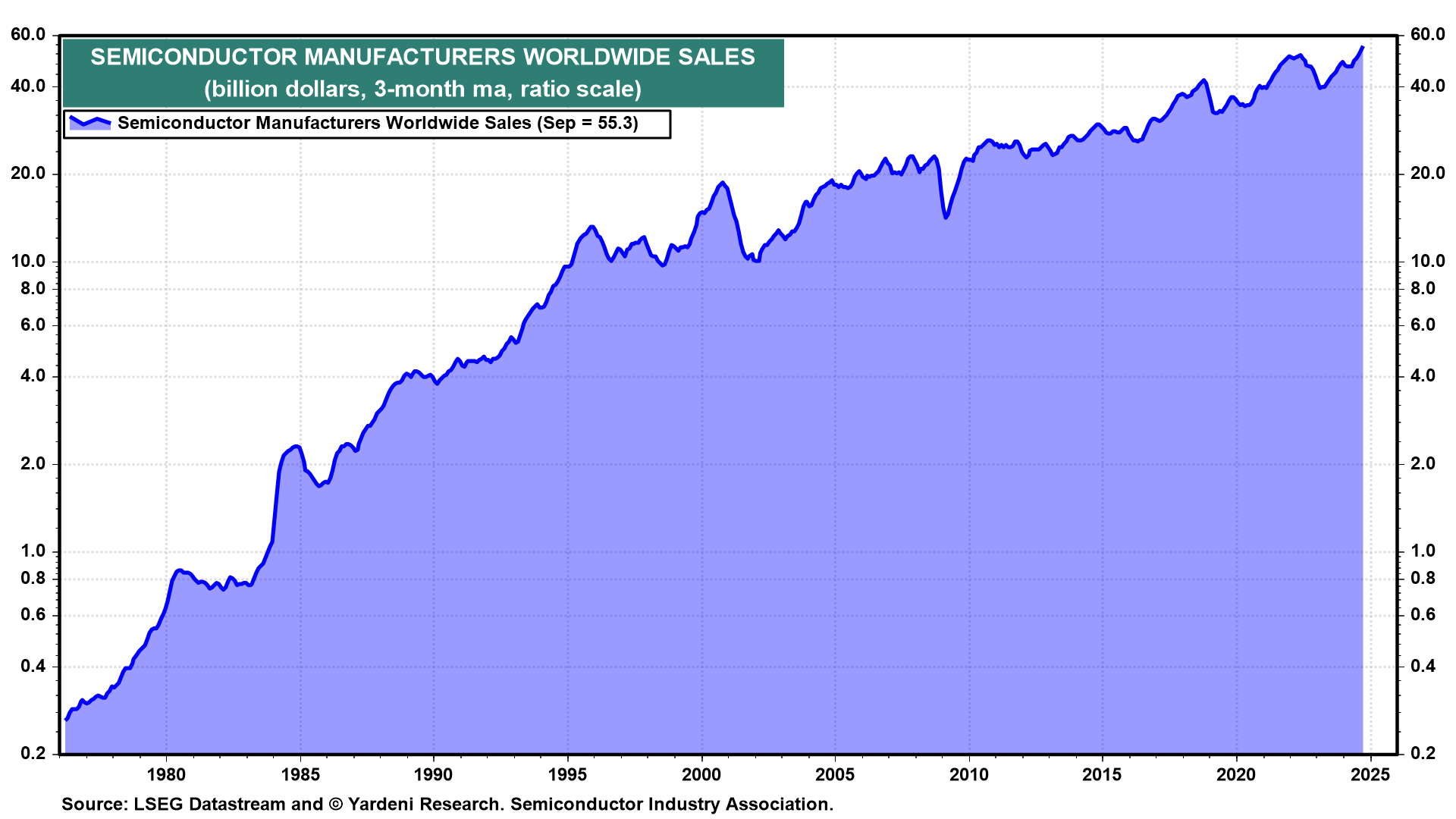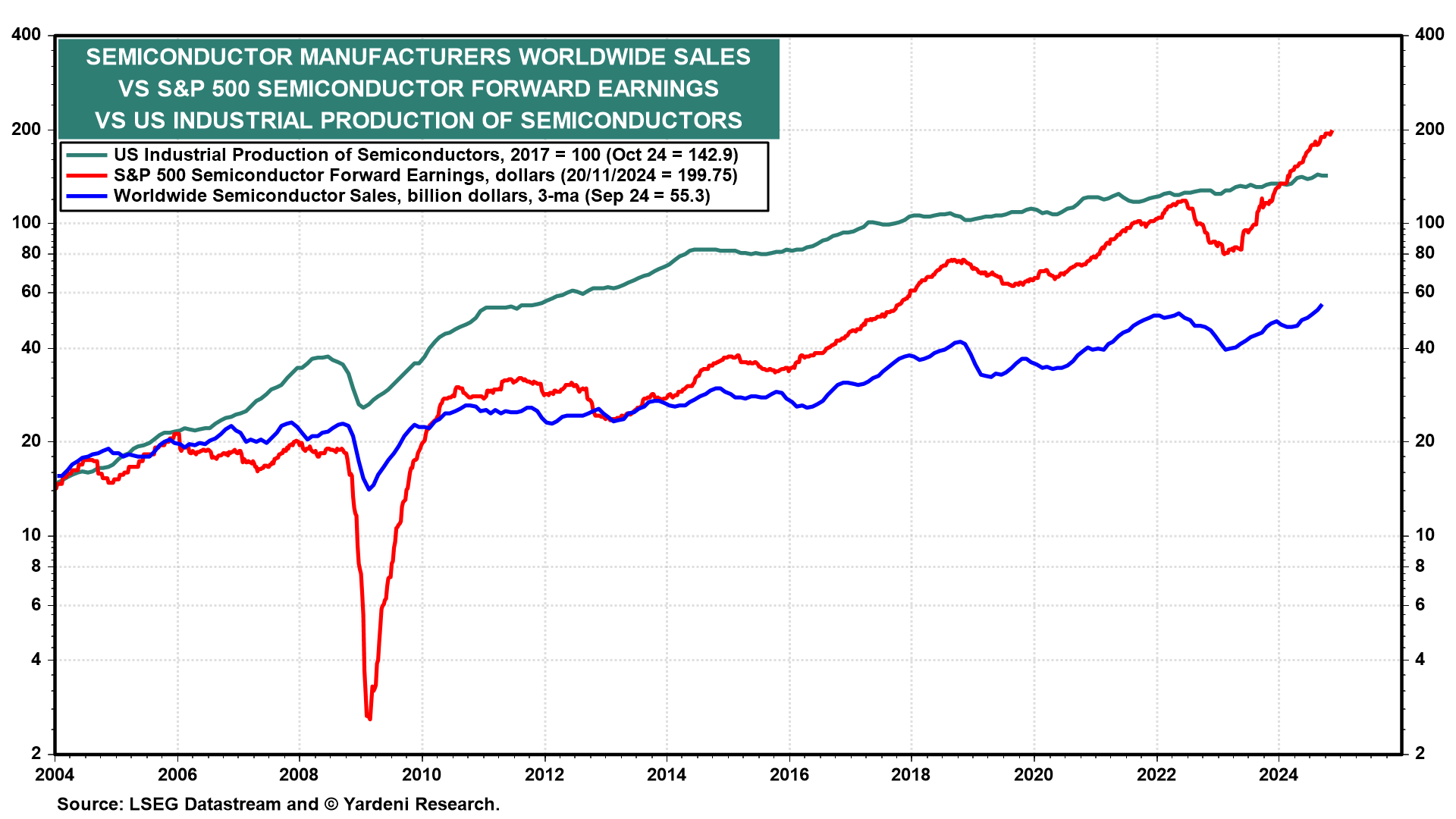In recent decades, the Digital Revolution has eclipsed the Industrial Revolution. Today, AI is a technology that has evolved from this relatively new revolution. AI simply represents another leap forward in data processing. During the 1950s through the 1970s, IBM mainframe computers processed data. The baton was passed to minicomputers sold by Digital Equipment in the 1970s. During the 1990s, desktop PCs manufactured by Compaq and Dell proliferated. Amazon Web Services (AWS) introduced cloud computing in 2002. The evolution of semiconductors and computers has been driven by the demand to process more and more data at faster and faster speeds.
In the 2020s, data processing has evolved to using lightening-fast Nvidia chips combined with AI software (i.e., Large Language Models) to process Big Data. The Digital Revolution is constantly evolving combining new generations of semiconductors with more powerful software to process an enormous amount of data. We think the result is a technology-led productivity boom that is just starting and could continue through the end of the 2020s and probably into the 2030s.
Here are a few recent related developments:
(1) Semiconductor sales. According to the Semiconductor Industry Association, the three-month moving average of worldwide semiconductor sales rose to a record $55.3 billion during September (chart).

(2) Semiconductor forward earnings. Also rising to new record highs has been the forward earnings of the S&P 500 Semiconductor industry (chart). This weekly series is a very good indicator of the monthly worldwide sales series.

(3) Semiconductor stock price index. The S&P 500 Semiconductor stock price index has been rising to record highs along with the industry's forward earnings, but faster. That's because during the current bull market, the forward P/E of the industry has almost tripled from about 13 to nearly 30 (chart).

